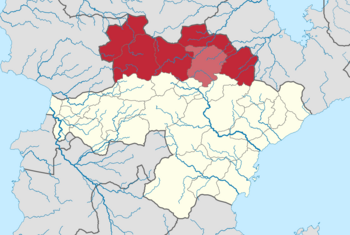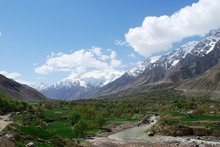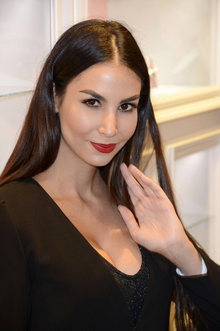Gandhari Kurdistan

Gandhari Kurdistan is an unofficial name for the parts of northern Gandhara where Kurds form the predominant ethnic group. It includes six governorates: Bayazidi, Khani, Dinawar, Tayran, Mawardi, and Caesarea.
The region covers an area of 166,227 km² (64,181 sq mi), constituting almost 25% of Gandhara's total area. According to the 2016 Census, the region has a total population of 2,030,005, just above 6% of the country's total population. The unofficial capital is considered to be Araz, the capital of the Tayran Governorate, which is a popular city among students due to the presence of prestigious universities and foreign companies.
History
During the Middle Ages, the Kurdish-inhabited regions of Outernatia came under the rule of local Kurdish chieftains, though they never established an unified nation state. In 1575, the current region of Gandhari Kurdistan came under the rule of the Gandhari Empire after Mustafa II, known as Mustafa the Conqueror, defeated several Kurdish tribes.
Ethnic groups had very little rights under the rule of the Sultans, which led to internal conflicts in which ethnic groups opposed the rule of the central government. An example is the Kurdish Rebellion of 1869–73. After the downfall of the Gandhari Empire and the foundation of the Al-Mansur dynasty, the relationship between the Kurds and the central government remained tense.
During the Gandhari Revolution, the Arab Socialist Union of Gandhara, a political and military organization who seeked to abolish the monarchy and to establish an Arab Republic, received mass support from the Kurds. The Arab Socialist Union promised more rights for ethnic minorities and after the overthrow of the Al-Mansur dynasty, a new Constitution was adopted by referendum, in which Sorani (a dialect of Kurdish) is recognized as an official language in the governorates of Gandhari Kurdistan.
Geography

Gandhari Kurdistan is largely mountainous, with over 72% of the region lying above 2,000 metres (6,562 ft). The mountains are part of the larger Hare Krishna mountain range that runs through Gandhara from north to south. The plains in the east are fertile and are used for growing grains and grazing. Various rivers, such as the Pankisar River, flow through the area and water these plains.
Politics
There have been ideas to merge the governorates of Gandhari Kurdistan into one administrative unit that would exist along the other governorates with a certain degree of autonomy. In the interest of national unity and to avert secessionist movements, the central government has always opposed this idea.
Political parties
Kurds in Gandhara are represented by the Kurdish Alliance, a Kurdish nationalist political party that holds 12 seats in the National Assembly, the lower house of the Parliament of Gandhara.
Demographics

According to the 2016 Census, there live around 4,032,000 Kurds in Gandhara, which is 12,4% of the total population. More than 1.5 million Kurds live in the mountainous areas of Gandhari Kurdistan, where they make up more than 75% of the population. Other ethnic groups in Gandhari Kurdistan include Arabs, Armenians, Assyrians, and Yazidis.
The table below shows the Kurdish population in relation to the total population in Gandhari Kurdistan.
Languages
The official languages of Gandhari Kurdistan are Sorani and Arabic; the Kurdish dialect Sorani is the most widely spoken language. The other two dialects of Kurdish, Kurmanji and Pehlewani, are also spoken by a part of the population. Armenian and Assyrian are the native tongues within their respective communities.
